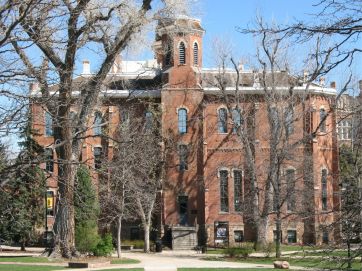CounterCurrent: Week of 8/28/2023
The school year is upon most of us. Here in Brooklyn, where classes don’t begin until next week, the streets have been oddly quiet over the last two weekends as families escape the City in an attempt to squeeze every last ounce out of summer.
And for most of you readers, college classes have already begun, and along with them the first weekend of NCAA Division I (D1) football (I’ll pour one out for you handful of Navy fans). These massive sporting events bring in millions of dollars for universities and the NCAA through ticket sales, merchandising, licensing deals, and, more recently, gambling. In the last few years, legislation has also allowed college athletes to have a share of this income by selling their name, image, and likeness (NIL).
The relationship between student-athletes and the educational mission espoused by the institutions on their uniforms has long been complicated. In this week’s featured article, Bruce Gilley, a member of the National Association of Scholars Board of Directors and a professor of political science at Portland State University, argues for a change in the way we do college sports.
Prior to the legislation and legal efforts that have made NIL contracts possible since 2014, colleges and universities often offered student-athletes admission and tuition in return for time on the field. Education appeared to be the priority: “You play for us, we offer you a ‘free’ education.” Of course, practice, travel, and injuries all eat into class time. As Gilley notes, “[college athletes] were estimated to spend over 40 hours a week on sports alone,” leaving little time for a full-time education. Clearly, the trade of “education for play” is a myth—at least for many D1 athletes.
Sadly, the outcomes for student-athletes reflect this myth. As Gilley reports: “an astounding 35 percent of all football players (40 percent of black players) and 52 percent of all basketball players (58 percent of black players) at the 130 ‘elite’ Division I schools who were full-scholarship recipients and required to be full-time students failed to graduate in the 2019-2022 cohort, according to NCAA data.”
The alleged benefits of “big sports” for schools are even harder to defend. Of the 130 D1 schools, 121 lost money on athletic programs in 2021. If you remember from last week’s CounterCurrent, I wrote that even as colleges and universities have faced serious financial trouble and have raised tuition in response, they’ve kept spending “like there’s no tomorrow.” This is clearly true in college athletics: “The median bowl football school lost $21 million on its athletics programs in 2021 according to the NCAA.”
Surely, the operation of college athletics is a lose-lose for everyone but fans and the best student-athletes. So, what’s to be done?
“The easiest [option],” says Gilley, “is to throw the doors open to professionalism.” This best represents what D1 college sports have become: a business (albeit a failing one). In this model, colleges and universities could contract and fire athletes at will. Schools get to keep their programs, but education is no longer a straphanger to athletic success.
The second option keeps things as they are, yet it “makes the educational failure more glaring.” Schools would “muddle through,” bumping benefits and negotiating NIL deals for student-athletes—all while keeping the myth of student-athlete education alive.
The final option is, of course, “the nuclear option.” In this model, colleges and universities would “‘Just Say No’ to big-time college sports” and admit that “higher education and college sports are no longer compatible.” Gilley goes on to write:
Universities can and should encourage the formation of sports teams and should find ways to raise revenues from them in order to pay their costs and ensure they are not a drain on other activities. But students need to be admitted on academic grounds alone. They need to be enrolled full-time. And they should, like all students, be held to the same academic standards.
I must admit, as a fan, I would have a hard time accepting this option. But Gilley is right to cite Jim Delany: “Education First, Athletics Second.”
What do you think of Gilley’s argument? How would you reform college sports so that education could remain the focus of the student-athlete experience? Respond directly to this email or write to me at [email protected].
Until next week.
Photo by Gene Gallin on Unsplash













